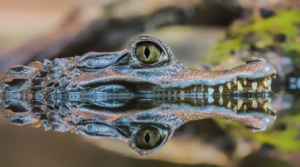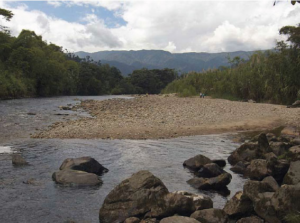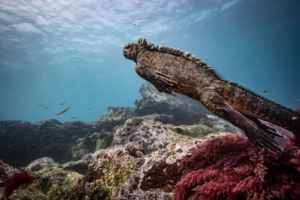When you envision the Galapagos Islands, the first image that springs to mind is often that of the majestic giant tortoises. These remarkable creatures, which have inhabited the archipelago for millions of years, serve as living symbols of the Galapagos’ unparalleled evolution and biodiversity.
The Largest Land Tortoises in the World
Galapagos giant tortoises, scientifically referred to as Chelonoidis, hold the distinction of being the largest tortoises on the planet. Through millions of years of adaptation in an isolated environment, various subspecies have emerged, each uniquely suited to the specific conditions of their respective islands.
A Fascinating Evolutionary Journey
With 13 distinct living species, Galapagos tortoises, also known as giant tortoises, embarked on their evolutionary odyssey two to three million years ago. Originating from the South American coast, they embarked on an arduous journey, drifting over 600 miles to reach the shores of the Galapagos. By 1835, when Charles Darwin arrived for the expedition that would eventually inspire his theory of natural selection, these tortoises had become distinct but closely related species. The similarities between them were so striking that scientists long debated whether they were actually different types of the same species.
It is estimated that more than 100,000 tortoises died at the hands of pirates, whalers and merchants during the 17th, 18th and 19th centuries. Although the islands were once thought to be home to at least 250,000 tortoises, today only 15,000 remain alive in the wild. These reptiles are found exclusively on the Galapagos Islands, making it a truly unparalleled destination to encounter them in their natural habitat.
Distinct Types and Adaptations
Giant tortoises exhibit distinctive physical features. Their most striking characteristic is undoubtedly their size. More specifically, fully grown individuals can weigh up to a staggering 250 kilograms and measure over a metre in length. They have sturdy legs and small air chambers within their shells, providing essential support for their massive bodies. There are two primary types of Galapagos tortoises: the domed tortoises, which flourish in the cooler areas of the archipelago, and the saddle-backed tortoises, which reside in dry, coastal environments. Saddleback shells boast a flared front opening that enables these remarkable creatures to extend their necks and reach tall cacti. Dominance among tortoises is determined by their ability to stretch their necks and heads to greater heights, influencing access to the best food, resting spots, and basking areas.
Island-Specific Adaptations
Each subspecies has uniquely adapted to the particular conditions of their respective islands. For instance, tortoises from Española Island boast long, slender necks, allowing them to access the branches of tall cacti for nourishment. In contrast, tortoises from Isabela Island possess larger, more robust shells, enabling them to withstand the harsh conditions of their volcanic habitat.
A Delicate Exterior
While their shells exude a tough appearance, they also possess a sensitive side. The surface of the shell, or carapace, is rich in blood vessels and nerves, rendering it highly receptive to touch. Comprising a honeycomb-like structure, the shell is relatively lightweight, facilitating the tortoises’ movement. The bottom portion, known as the plastron, offers solid protection against the rugged terrain. The ribs and backbone of the tortoise fuse with the bones, forming an integral part of their protective armour.

Foto: Descubriendo Galápagos
An Extended Lifespan
Giant tortoises hold the distinction of being among the longest-living land vertebrates, often surpassing a century in age. The oldest on record lived to be 175! These creatures reach maturity around 20 to 25 years old. Typically, they engage in breeding activities during the hot season, which spans from January to May. Mating can take several hours, after which the female migrates to an area with dry, sandy ground to lay her eggs. In this secluded spot, she diligently digs a hole and lays anywhere between two to 16 eggs. The incubation period lasts approximately 130 days, but what transpires during the subsequent period remains a mystery known as ‘the lost years’ among conservationists. The young tortoises resurface when they are around five years old and reach a length of 50cm. At this size, they become too large for the Galápagos hawk, the only native predator, to carry them off.
Conservation Efforts and Restoration
The longevity of giant tortoises, combined with their slow reproductive rate, has rendered them particularly susceptible to human-induced threats. Over the centuries, indiscriminate hunting and the introduction of invasive species, such as rats and goats, have severely impacted giant tortoise populations. However, thanks to dedicated conservation and protection efforts, significant strides have been made in their recovery. Initiatives such as captive breeding programmes, the removal of invasive species, and habitat restoration have contributed to the resurgence of giant tortoise populations in the Galapagos.
An Uncomplicated Lifestyle
Galapagos tortoises lead a relatively uncomplicated life, primarily grazing on grass, leaves, and cacti. They spend ample time basking in the sun and devote nearly 16 hours per day to rest. These tortoises possess the remarkable ability to store significant amounts of water and have a remarkably slow metabolism. This adaptation allows them to survive for up to a year without food or water, demonstrating their extraordinary resilience.
Gardeners of the Galapagos
Galapagos tortoises play a vital role in shaping the ecosystem of the Galapagos Islands. As they move about, they disperse plant seeds through their dung, serving as essential agents of seed dispersal. Additionally, their trampling of vegetation and the creation of permanent trails and nest holes contribute to the diversity and regeneration of the islands’ flora. Their invaluable contribution to the Galapagos ecosystem has earned them the title of ‘the gardeners’ of the Galapagos.
Encountering Galapagos Giant Tortoises
Today, a visit to the Galapagos presents a unique opportunity to witness these incredible giant tortoises up close in their natural habitat. Observing their graceful movements, witnessing their leisurely pace of life, and learning about their crucial role in maintaining the ecological balance are unforgettable experiences. As you explore the Galapagos Islands, immerse yourself in the captivating world of these living treasures of evolution.

Foto: El Universo




